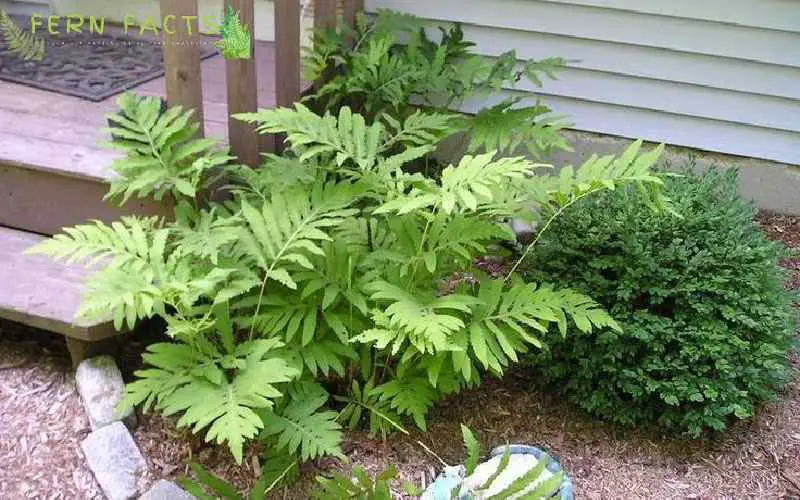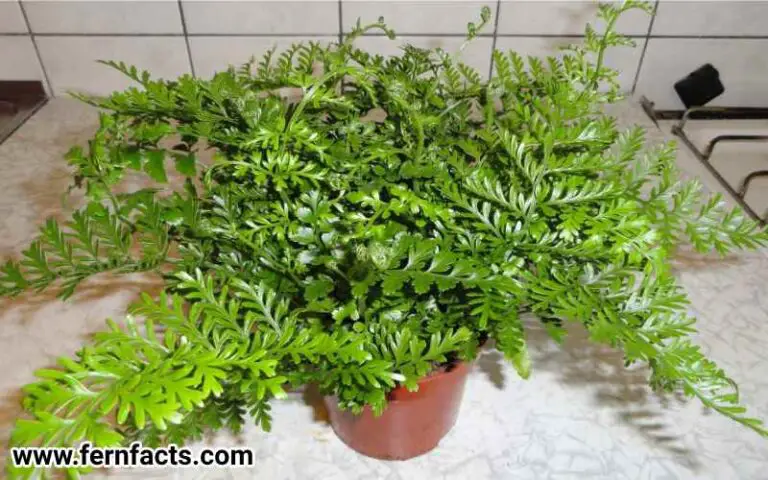Sensitive Fern – All You Need to Know
Want to grow sensitive ferns at your house? Then don’t worry! This article will answer your confusion regarding these ferns.
Therefore, in this article, I’ll provide you with a general overview of sensitive ferns and their other characteristics.
Besides, I’ll also give you their caring tips so that you can bloom these ferns in your house. So, let’s begin with the guidelines.
Overview of Sensitive Ferns

- Botanical name: Onoclea sensibilis
- Common name: sensitive fern, bead fern,
- Plants: Deciduous perennial
- Native range: Northern hemisphere: Russia, East, China and eastern Asia, Northern America
- Native habitats: Wood habitats
- Shade requirements: full to partial shade
- Foliage color: green
- Height: 3 to 4 inches
- Soil type: clay, loam, sand
- Soil pH: acidic, neutral
- Tolerance: Rabbit’s tolerance, wet soil tolerance
- Hardizone: 4,5,6,7,8
- Toxicity: Mammals
Sensitive ferns are pale sea-green color ferns that are widely spotted in the northern hemisphere region.
These ferns also received garden merit awards from the Horticulture Society for their extraordinary qualities. You can plant these ferns as shady bed borders and underplants for roses and shrubs gardens.
All About Sensitive Ferns
Sensitive ferns are deciduous ferns that are widely distributed in the northern hemisphere. These ferns have coarse textured medium to large size and are highly sensitive because their fronds die quickly if touched by anyone.
These ferns prefer acidic loam sandy Soil, which is below 6.8 pH. Additionally, they are fond of wood habitats, dell swamps, wet meadows, thickets, and bogs, along with riverbanks and roadside ditches.
They can hardly tolerate freezing temperatures and can tolerate a maximum of -20°C to -15°C.
These ferns are toxic to mammals however, in ancient Native American history, they have been used for food and medicine purposes by minimizing their toxicity level through the heating process.
However, these plants should not grow near farmland or pastures because they can be toxic. Besides, these ferns are well-resistant to rabbits and deer.
These ferns are cultivated as ornamental ferns in traditional ways to decorate landscapes.
Sensitive Ferns Care and Maintenance
Let’s find out the care and maintenance tips for these sensitive ferns if you tend to grow these ferns at your house.
By following these simple care and tips you can grow these ferns in your bathroom & house without much effort.
Light Requirements
Sensitive fern prefers dappled brightness and filter shade. It means they can grow actively and they get indirect filtered sunlight.
Direct sunlight could be problematic for these plants as they are already too sensitive to touch, which can also give poorer health to your plants.
You can give them direct sunlight a maximum of 2 to 3 hours, not more than that. For the rest of the day, these ferns need partial sunlight for about 3 to 6 hours.
Similarly, by giving them a natural environment you can provide them with ideal lighting conditions as well.
Soil Conditions
Sensitive ferns like moist soil with a sound drainage system. Although they can tolerate drought conditions, they still need hydration and moisture in their soil.
The ideal soil with a pH of 5 to 5.6 with rich organic materials will keep the soil’s nutrients. Similarly, for container plants, you need to put a hole in the pot so that the unnecessary water doesn’t affect the soil conditions.
Because poor drainage soil can cause root rot in your plants.
Water Techniques
The critical factor to make your plants thrive is proper watering techniques. This will balance your plants’ hydration level. Although sensitive ferns can tolerate wet soil, not for too long.
That’s why you can give them water twice a week. This will keep the soil moist and hydrated, neither too dry nor too watery.
Avoid giving them excessive water, which might damage their roots and give them black spots as well. Similarly, watering can also give them curled, yellow leaves. Hence, try to water them to a sufficient amount.
Make sure you check the soil conditions before watering.
Fertilizer
You can fertilize these ferns during their growing seasons. Thus, once a month could be an ideal way to fertilize these ferns during spring.
For fertilizer, you can choose slow-release fertilizer in an equal ratio of phosphorus:potassium: nitrogen (NPK).
Temperature and Humidity Level
Sensitive ferns can tolerate temperatures of 5 to 35°C or 41 to 95°F. However, these ferns can adapt to -22°F as well. In the spring and summer seasons, they prefer a warm atmosphere with moist soil.
In winter and autumn seasons, it can tolerate freezing temperatures to some extent but not for too long. That’s why, during those seasons, they will require some cold protection to survive.

How to Do Pruning of Sensitive Ferns
Pruning could be a simple process if you’re a gardener or plant lover or have professional hands. For pruning, it is better to find some sharp scissors or pruning tools.
Then sanitize your tools before using them; otherwise, it might give your ferns several germs and bacteria. As these ferns are very sensitive to touching, the winter season could be the best time for them to prune.
Usually, sensitive ferns become dormant during winter; therefore, it does not affect them much. Try to prune in the late winter or early spring when the new growth will start appearing.
For pruning, cut and trim any brown, damaged fronds of your plants and repeat the process until you observe their base shape.
However, be careful when you’re pruning because you might not want to prune any new growth fronds, which will affect their growth to some extent.
Remember, don’t pour water immediately after pruning; it might give them fungal diseases.
Sensitive Ferns Problem and Disease
Let’s look for some common diseases and problems so that you can cure these ferns beforehand.
Brown spots
Brown spots are one of the common diseases of these sensitive ferns. This might get worse in the warm and wet atmosphere.
This can happen because of overwatering. Therefore, you must balance the watering techniques to reduce these brown spot issues.
Leaf beetles
Pests like leaf beetles could be another issue of these ferns. These pests might harm the plants’ fronds and roots.
To solve this problem, remove the beetles with your hands. Further, you can also use warm soapy water on the fronds so that those beetles do not attack the fronds in the future.
Conclusion
In short, sensitive ferns are deciduous perennial ferns that are widely used for decoration purposes and cultivation processes.
You can quickly grow and care for these ferns by giving them ideal lighting, watering, soiling, fertilizing, and troubleshooting all those pests and diseases that help your ferns thrive in nature.







